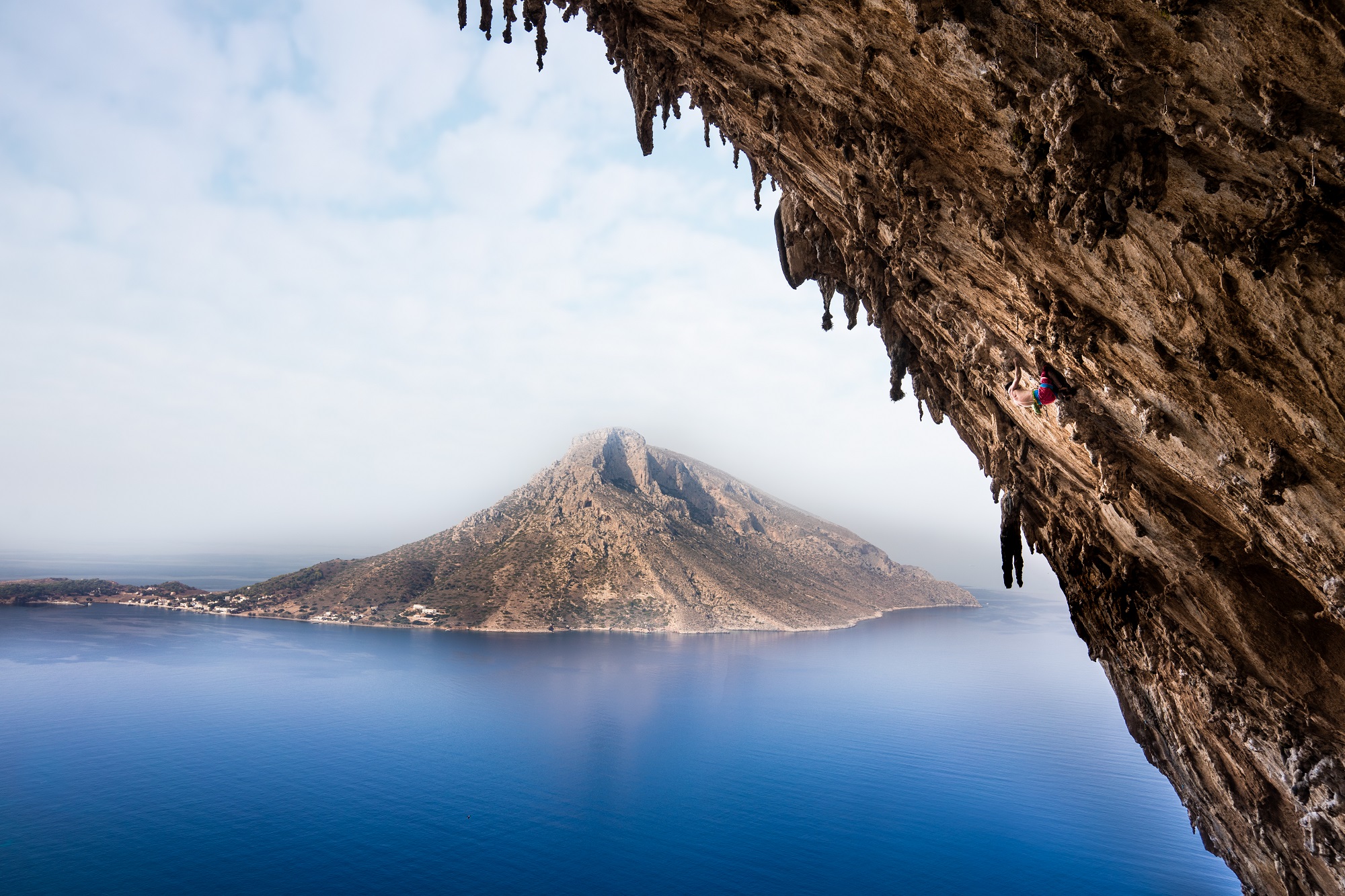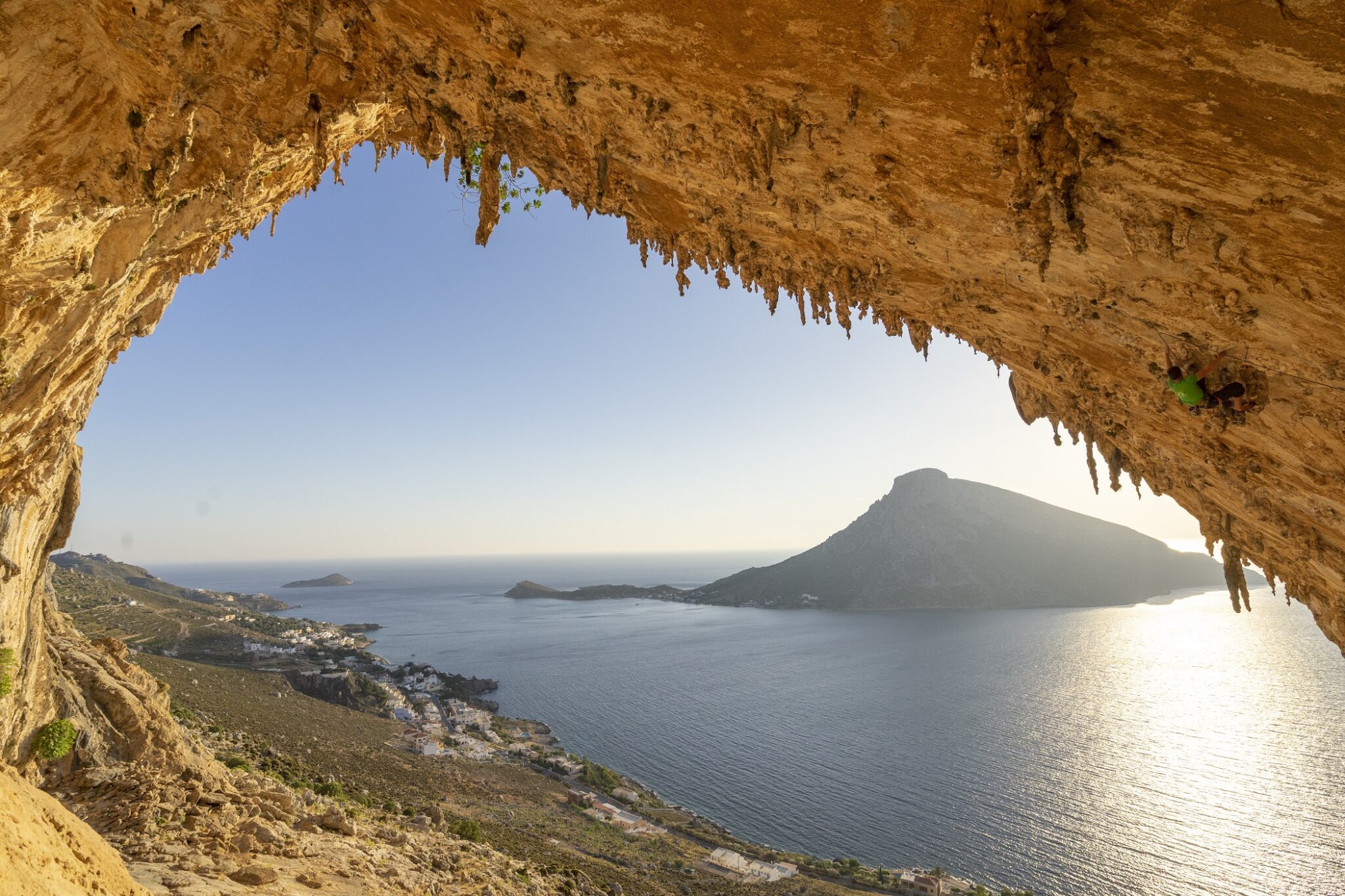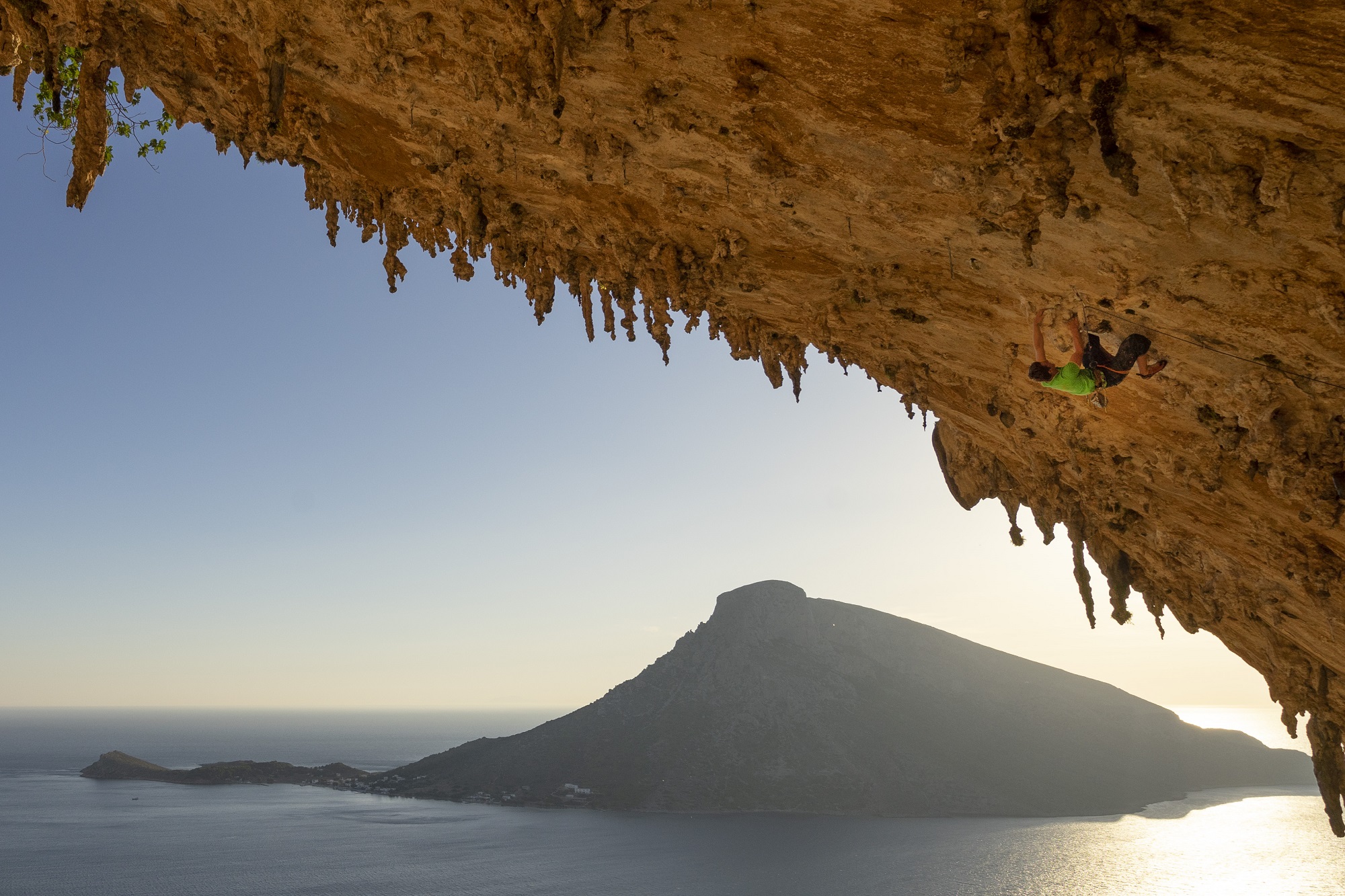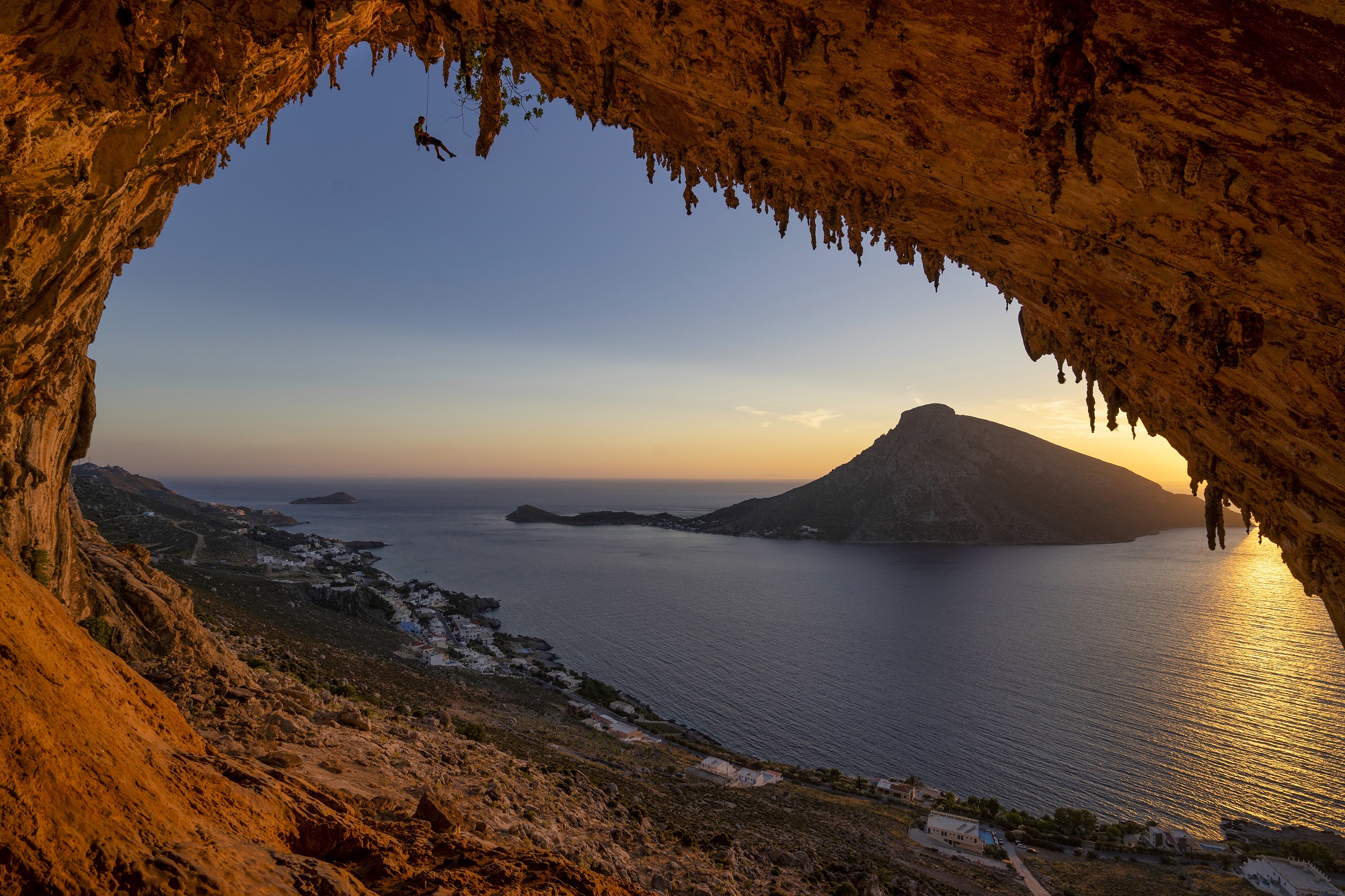Until recently, even in areas experiencing rapid tourism industry growth, some places remained local secrets. However, the rise of alternative tourism combined with the all-seeing internet has shed light on unknown spots, transforming them into must-see destinations.
The Grande Grotta cave on the Dodecanese island Kalymnos is such a case – twenty years ago, its location was known only by word of mouth, today it has developed into an international climbing destination, drawing significant numbers of visitors from all over the world; so much so that queues may be found here on weekends during July and August.
The cave was given its name – meaning ‘large cave’ – by the Italians, who controlled the Dodecanese islands from 1911, following Ottoman rule, until 1946, when the group of islands were transferred to Greece following the World War II peace negotiations. The renowned Grotta Gigante, in northeastern Italy, close to the border shared with Slovenia, influenced the naming of the Kalymnos cave.
The imposing cave, formed out of reddish limestone, is approximately 50 metres high and features sections as wide as 200 metres. It is divided into three sections, Apogevma, to the left, Grande Grotta, central, and Panorama, to the right, based on climbing routes and their respective degrees of difficulty, offering something for all visitors regardless of climbing experience.
The rock’s Apogevma section, meaning ‘afternoon’, was given this name as it remains shady until midday before being exposed to the sun in the afternoon hours, a crucial detail for climbers given the usually hot weather on the island in the summer.
One does not need to be interested or active in rock climbing to enjoy the beauty offered by Grande Grotta. The spot ranks as one of the most impressive on the western side of Kalymnos, making it an ideal place to simply visit. Sightseers can explore the cave’s interior, featuring large stalactites, and enjoy the view of the endless blue of the Aegean and the island of Telendos directly opposite.
Grande Grotta’s location and view result in one of the most impressive sunsets to be seen throughout the Dodecanese islands. The sun sets behind Telendos, projecting impressive orange-red colours onto the horizon for an amazing contrast with the colours of the sea.
Grande Grotta directions
Though Grande Grotta is often described as being close to the villages of Myrties and Armeos, most climbers and visitors prefer to begin from Masouri, one of Kalymnos’ most serviced and renowned resort areas which also hosts the island’s best-known beach.
From Pothia, Kalymnos’ capital, Masouri is 8km and a 15 minute drive away. Parking is available at the Filoxenia hotel, or alternatively there is a public bus that runs to Masouri.
Easily spotted, a trail next to the hotel leads to the Grande Grotta cave via an olive grove which needs to be crossed. Follow the red signs and estimate a walk of roughly 20 minutes.
Read also:
Tilos: Your guide for a lovely trip to this heavenly island of the Aegean
The story of a Greek civil engineer who left Athens for a more peaceful lifestyle










